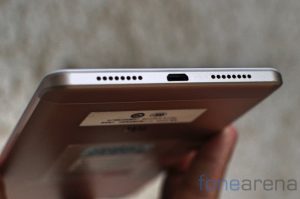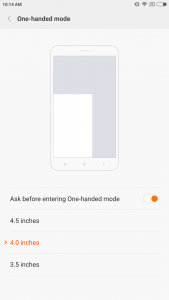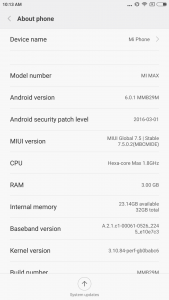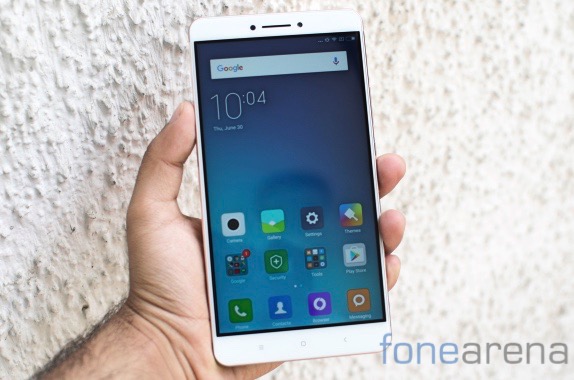
There’s a new phone in town and it is absolutely huge! Yes, it is pretty well endowed technologically but seriously, it really is very big. Following the launch of the Redmi Note 3 and the Mi 5, Xiaomi is all set to bring the Mi Max to India. A beast of a device that packs a 6.44 inch display into its slim frame, Mi Max is a very curious phone that almost edges into the small tablet territory. We’ve been testing it out over the last few days and here’s what we think about it.
Specifications
- 6.44-inch (1920 x 1080 pixels) Full HD IPS 2.5D curved glass display with 1000 : 1 contrast ratio, 72% NTSC color gamut
- Hexa-Core Snapdragon 650 / Octa Core Snapdragon 652 processor with Adreno 510 GPU
- 3GB RAM with 32GB storage / 4GB with 128GB storage, expandable memory with microSD
- MIUI 7 based on Android 6.0 (Marshmallow)
- Hybrid Dual SIM (micro+nano/microSD)
- 16MP rear camera with dual-tone LED Flash, PDAF, f/2.0 aperture
- 5MP front-facing camera with 85-degree wide-angle lens, f/2.0 aperture
- Fingerprint sensor, infrared sensor
- Dimensions: 173.1×88.3×7.5mm; Weight: 203g
- 4G LTE with VoLTE, Wi-Fi 802.11ac (2.4 / 5GHz) MIMO, Bluetooth 4.2, GPS + GLONASS
- 4850mAh (typical) / 4760mAh (minimum) battery
Design
The Mi Max is a giant amongst smartphones. Positively huge, it bends most rules about ideal smartphone sizes. That said, if the industry trends hold true, it might not be alone in its category for long. For now though, the Mi Max looks very similar to what it really is, an oversized Redmi Note 3.
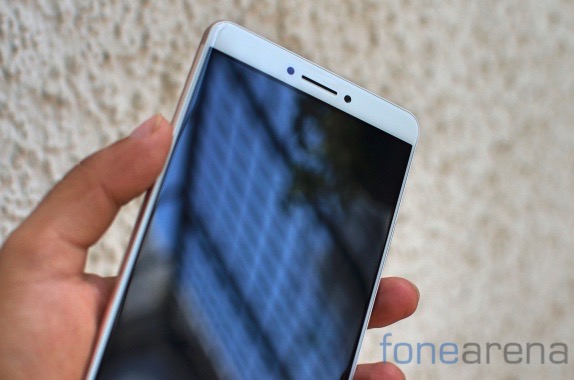
The design is somewhat generic with some flourishes that try to keep things fresh. As you would expect, the front of the phone really is just the 6.44 inch screen for the most part. Above it lies the earpiece and the proximity sensor while at the bottom are capacitive buttons. A notification LED is discretely integrated above the display area. Slim bezels run on both the left and right. Notice closely and you’ll spot a slim chamfered edge running all around the phone, gradually merging into the white front plastic.
Over on the left is the volume rocker followed by the power button. These are metal keys with very good tactile feedback. More importantly though, they are ergonomically placed to be within easy reach. Even in my small-ish hands, it wasn’t particularly hard to switch between the capacitive keys and the side mounted buttons which says a lot about the excellent ergonomics on the hardware. The left hand side is where you get access to the Hybrid SIM slot wherein you can choose to have either two SIM cards or a single SIM and a memory card. We really don’t appreciate having to make this choice and have been quite vocal about this in the past and really, it is hard to believe that space was such a constraint on a device as large as the Mi Max. At the bottom is the microUSB port along with speaker grilles on both side, the phone has both a 3.5mm audio jack as well as an IR port at the top.
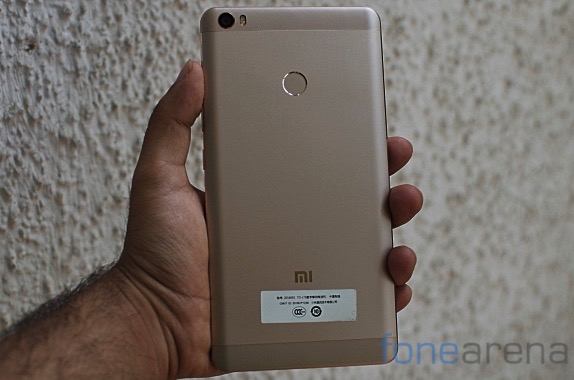
Moving on, the rear of the phone is mostly just a large swath of aluminum with plastic endcaps at the top and bottom. The plastic cap at the top integrates the camera module as well as the dual tone LED flash. Further down is the fingerprint sensor and right towards the bottom is the Mi logo. Like the other buttons, it is clear that a lot of thought went into the placement of the fingerprint scanner too as we had no trouble reaching out to it. The clean design is consistent with most Xiaomi designs and looks pretty good if not slightly boring. The tapering edges on the rear of the phone make holding the device a very comfortable experience as it doesn’t dig into the palm.
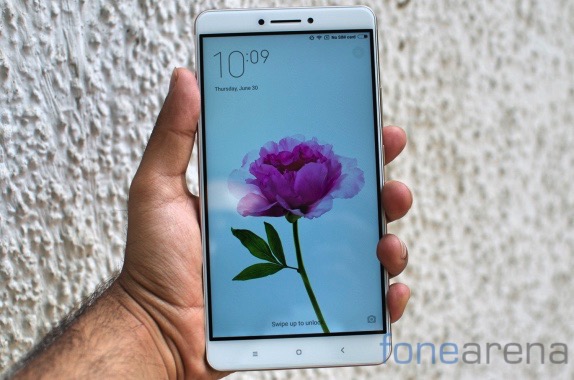
The Xiaomi Mi Max measures 173.1×88.3×7.5mm and weighs 203 grams which isn’t all that bad once you consider the size and the battery tech built into it. We had trouble fitting it into jeans pockets where it created a very odd-looking bulge and anticipate that to be a problem for many. Additionally, pressing down the screen has a tendency to warp it, it doesn’t require much pressure to bend the device despite its aluminum construction. Needless to say, this is of some concern but for the most part,the Mi Max delivers the goods and is anything but an eyesore that will be appreciated by users.
Software
MIUI 7 is the software onboard the Mi Max like practically every Xiaomi device shipping right now. That said, the phone is expected to get the MIUI 8 upgrade shortly. While the current ROM is based on Android 6.0 Marshmallow, it is a significant departure from how stock Android operates with its heavily customized user interface.
The interface adopts a distinctly iOS like look and drops the two level homescreen hierarchy seen in Android. The lockscreen shows basic notifications and lets you swipe into the camera. Unlock the phone and you get dropped into a homescreen where all the applications are laid out in a grid. You can of course drop them into folders. The notification shade is pretty normal for the most part though Xiaomi has some nifty additions lined up for MIUI8 to spruce up the notifications area and we’re quite excited to check those out over the coming days.
A big phone has its uses, a big phone can also be problematic to use in many situations. For those moments, The Mi Max has a pretty nifty one-handed use mode built-in. Simply swipe between the home and back capacitive buttons and it’ll prompt you if you wish to drop into a one-handed use mode. Here too, you can choose between multiple screen size emulations. Typical Xiaomi fashion, there are a lot of customization options available under that simple UI. The interface preference really comes down to personal choice but personally, i think it is one of the few custom UIs that i can tolerate or even like over stock Android or something like Nova Launcher. We’re quite confident that most users will be pretty happy with the software stack on the Mi Max.
Performance
We weren’t kidding when we called the Mi Max an oversized Redmi Note 3. Internally, the phone is running pretty much the same hardware. The phone is powered by a hexa core Snapdragon 650 processor with four Cortex A53 cores clocked at 1.4Ghz and two Cortex A72 cores clocked at 1.8Ghz. The processor is surprisingly robust given its entry-mid level positioning and we got some fantastic performance out of the phone. There’s 3GB of RAM onboard and though MIUI is quite memory intensive, we never really had issues with multitasking. Be it games, multiple chrome tabs or just streaming video, there wasn’t much of lag if any and the processor keeps things running smooth just fine. Gaming does cause the phone to heat up slightly but due to the size of the phone and the aluminum back acting like a large heat sink, the Mi Max cools down pretty quickly. There is a 128GB version of the phone that is equipped with 4GB of RAM that should perform even better but we haven’t had that in for testing. For those interested in benchmarks, we’ve included a few synthetic benchmarks below.
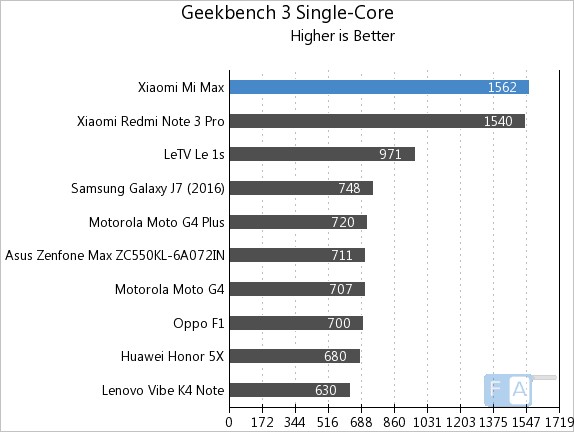
It tops the Geekbench 3 Single-Core benchmark scoring slightly better than the Redmi Note 3 that is also powered by the same processor.
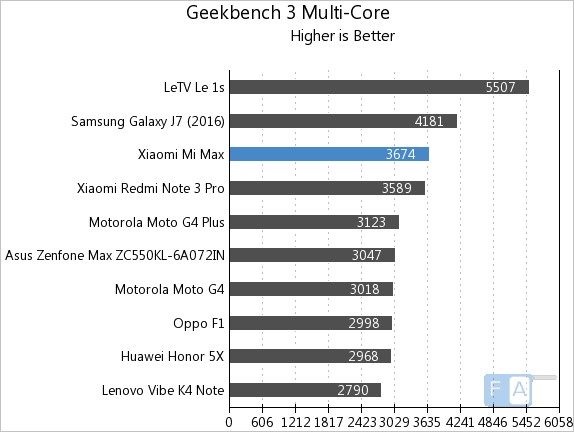
It scored 3674 points in the Geekbench 3 Multi-Core benchmark and grabs the third spot.
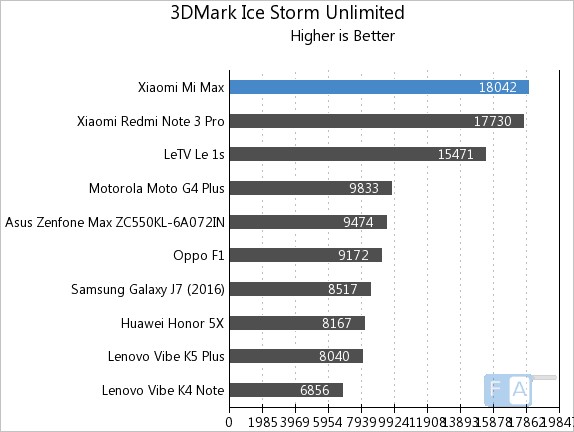
It topped the 3D mark Ice Storm Unlimited GPU benchmark.
Display
If you’re buying the Mi Max, the display has to be a key interest area for you. The 6.44-inch display has a resolution of 1920 x 1080 pixels which means that the pixel density isn’t all that impressive compared to many other devices. In fact Xiaomi’s own Mi 5 and Redmi Note 3 beat it on that front. The display panel covers 72% of the NTSC color gamut and offers software based tweaks to change color profiles and saturation levels to suit your preference.

From a usage perspective we found the display to be perfectly serviceable. It isn’t the most vibrant or brightest display unfortunately but is good enough for the most part. Outdoors, you might wish that it would go a bit brighter but that doesn’t mean that the screen is not visible. On occasion, the screen appears a bit soft when you look at it closely but that’s an exception not the rule. The display is above average at best and clearly what you gain in size, you lost out marginally in terms of quality.
Camera
There’s a 16MP camera at the back of the Mi Max with a dual-tone LED Flash, PDAF and f/2.0 aperture. This is accompanied by a 5MP front facing camera. Unfortunately, the camera module has to be the weakest link here as photos from the phone were average at best.
While the photos appear fine on your display, there’s a fair amount of noise in the images on closer inspection. Like the Redmi Note 3, the phone is just good enough in brightly lit conditions but low light shots can get pretty bad. The image quality also suffers in very brightly lit conditions and the HDR mode isn’t always able to handle it.
As you’ll notice in the shots above, the phone particularly suffers in the low light images where the shots are very soft and exhibit significant noise. In good lighting, the images are usable for the most part.
Connectivity & Battery Life
The Mi Max comes pretty well equipped in terms of connectivity features. The phone supports 4G LTE and can also make calls over VoLTE which means that is well positioned to make good use of the upcoming Jio network. There’s Wi-Fi 802.11ac (2.4 / 5GHz) onboard with MIMO support. The phone also supports Bluetooth 4.2 as well as GPS and GLONASS. A mainstay of Xiaomi phones is the built-in IR blaster that we find very handy around the house. The phone has 32GB of built-in storage of which around 24GB is available at launch but as we mentioned earlier you can boost that via the microSD card slot.
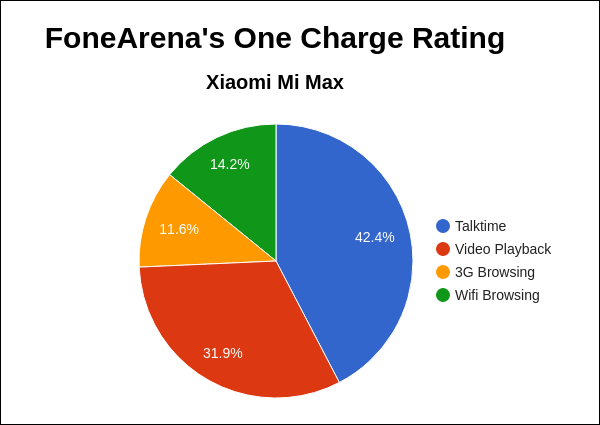
There’s a 4850 mAh battery built into the Mi Max that we feel is yet another compelling reason to go for the phone. Behind the slim 7.5mm shell of the phone, Xiaomi has managed to fit a battery that can easily last a full day of extensive use and can stretch it to even two days if you are frugal with it. The battery life is really impressive on the device and even with pretty heavy use, we found it very hard to bring it down by the end of the day.
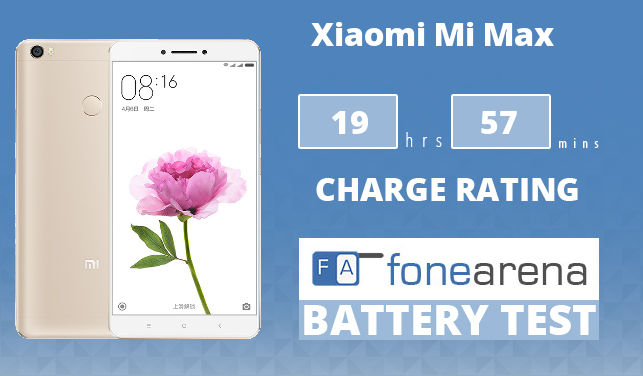
It achieved a One Charge Rating of 19 hours and 57 minutes in our battery test, which is brilliant. Check out the complete set of battery life test results here.
Conclusion
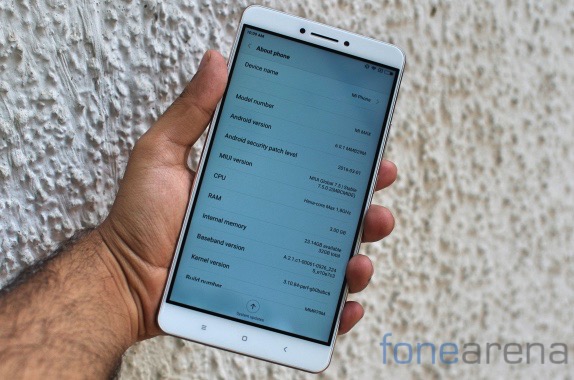
For most people, it would be a pretty simple decision whether to buy a Mi Max or not. Potential buyers includes anyone who wants a really big display but bringing others into the fold is where the challenge lies. We feel that Xiaomi has done a pretty good job of creating a case for the Mi Max. The hardware design in particular has made it a very ergonomic phone that easily fits in your hand. The large display grows on you and the battery life is hard to beat. Yes, the phone has its issues and the camera in particular leaves a lot to be desired but we feel that at a price point of Rs. 14,999 for the base variant, the Xiaomi Mi Max is definitely worth a consideration for users who consume a lot of media on their devices.


